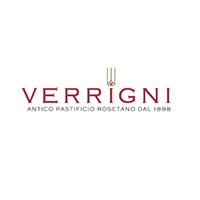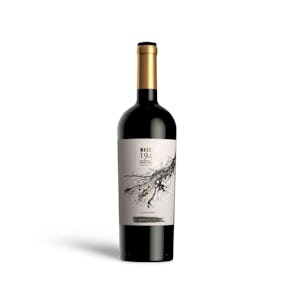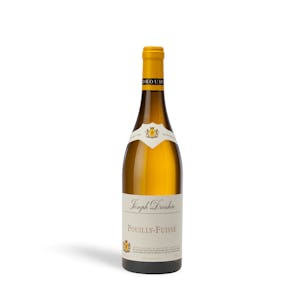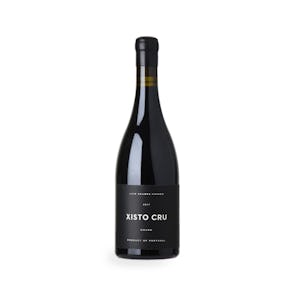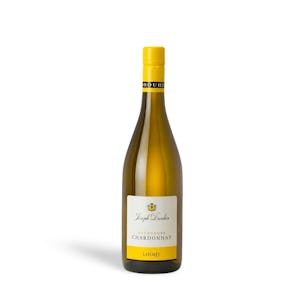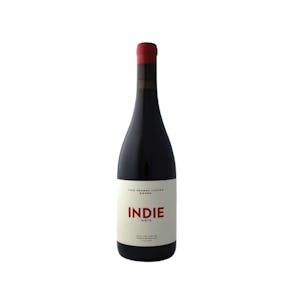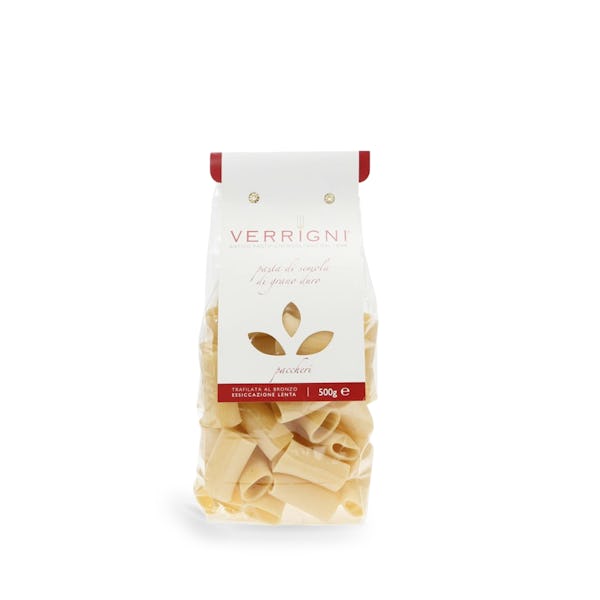
TASTING NOTES FROM THE CURATOR
Paccheri is a traditional Neapolitan pasta that originated in Campania, Italy. It’s also called “schiaffoni,” and its name stems from the word, “schiaffo,” which in Italian means slap, and in Neapolitan, means pat. This name is attributed to the “slapping” sound the pasta makes when sauce is poured onto it.
Verrigni Paccheri is shaped in the classic large tubes, with a smooth surface, and a space perfect for scooping up sauces.
PREPARATION AND PAIRINGS
Verrigni Paccheri is perfect for hearty, meaty sauces. It’s also popularly used for stuffed pasta in Italy. Try stuffing it with a sausage and garlic mix, then topping it with tomato sauce. Or you can also fill it with mushrooms, and serve it with a delicious and garlicky white wine-based sauce.
FROM ROSBURGO TO THE WORLD
Luigi Verrigni founded Antico Pastificio Rosetano in 1898. He supplied fine artisan pasta to noble families in Rosburgo, and thus, the quality of his pastas was already known. His pastas were made with grains ground with stone millstones, then mixed with Gran Sasso water, and dried on bamboo canes. The demand for Verrigni pastas got so big that Luigi’s son, Gaetano, experimented with “dressing rooms,” where he put current fans and other heat sources to create a steady temperature for the pasts drying.
Through the years, Verrigni Pasta has expanded its distribution, introduced the innovative gold die, and in the 1980s, was one of the few pasta factories to sell organic pasta. This made them even more popular. They continue with the innovation, and pushing the boundaries, and trying new things. Verrigni continues to make superior quality pasta, with all the craftsmanship of tradition, and the beauty of technology.
Storage Instructions
Store dry, uncooked pasta in a cool, dry pantry for up to one year. Preserve freshness by storing dry pasta in an air-tight box or container. Store plain (no sauce or other ingredients) cooked pasta in a container or plastic sealable bag in the refrigerator for up to five days and up to three months in the freezer.

